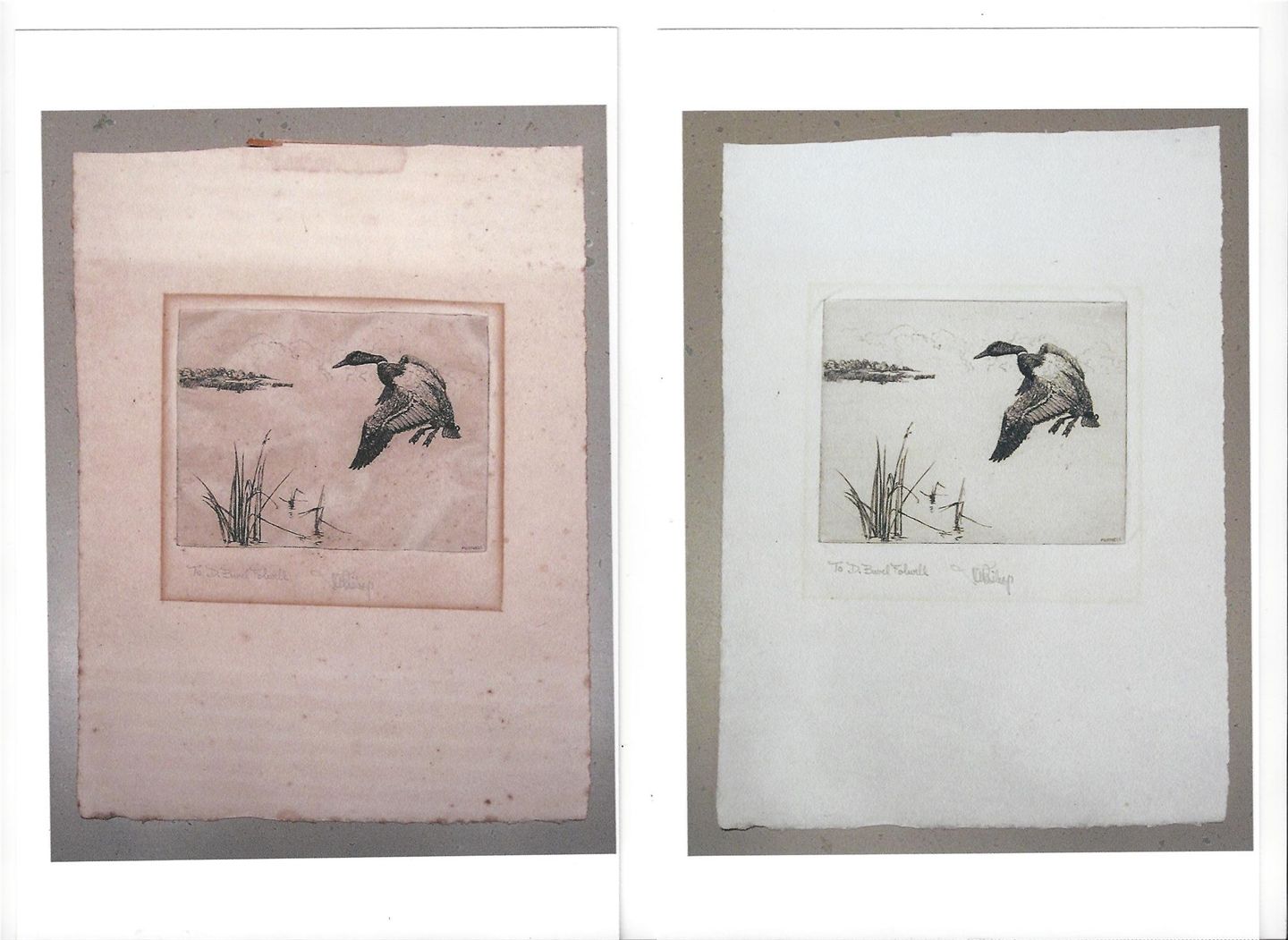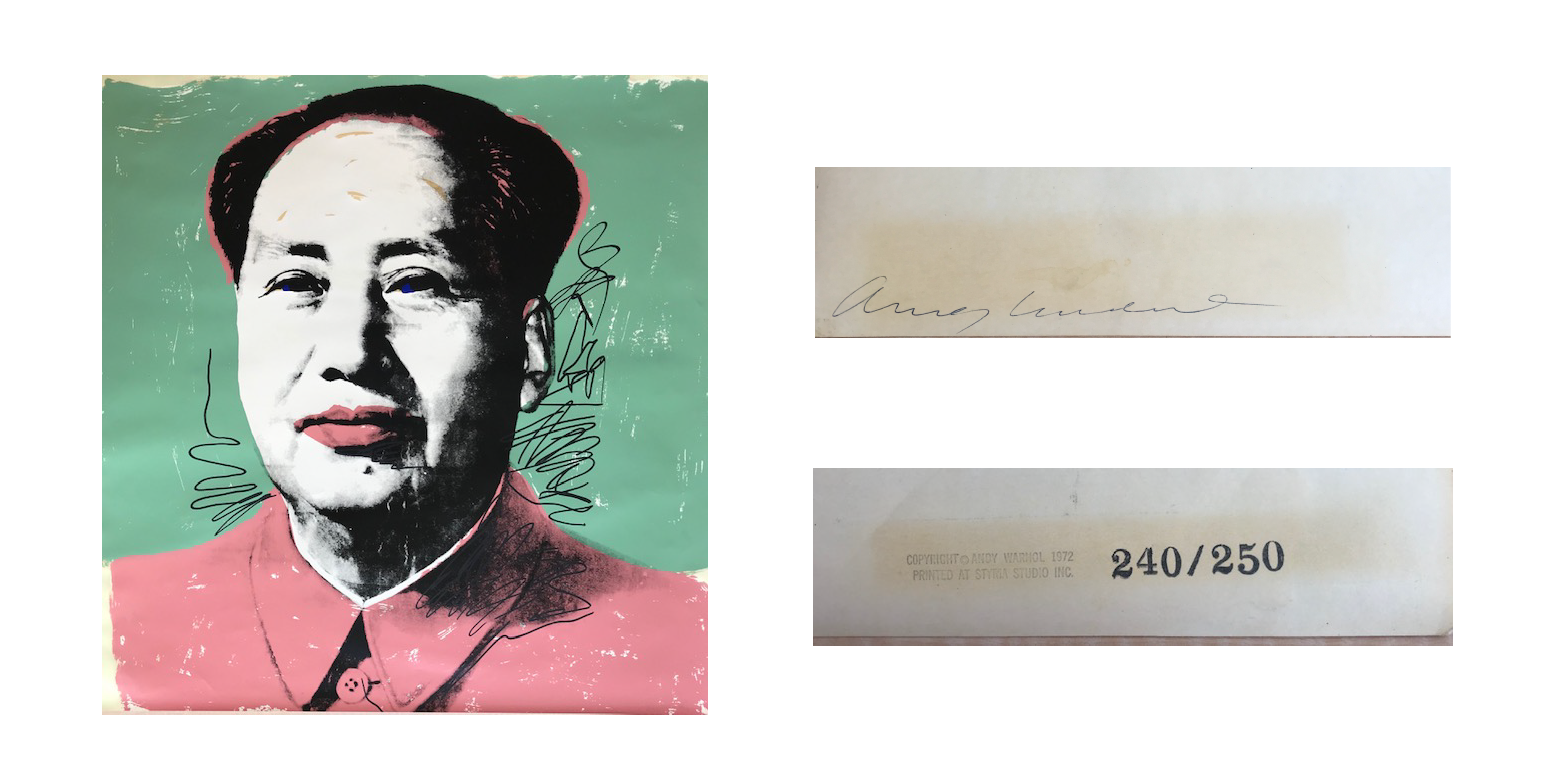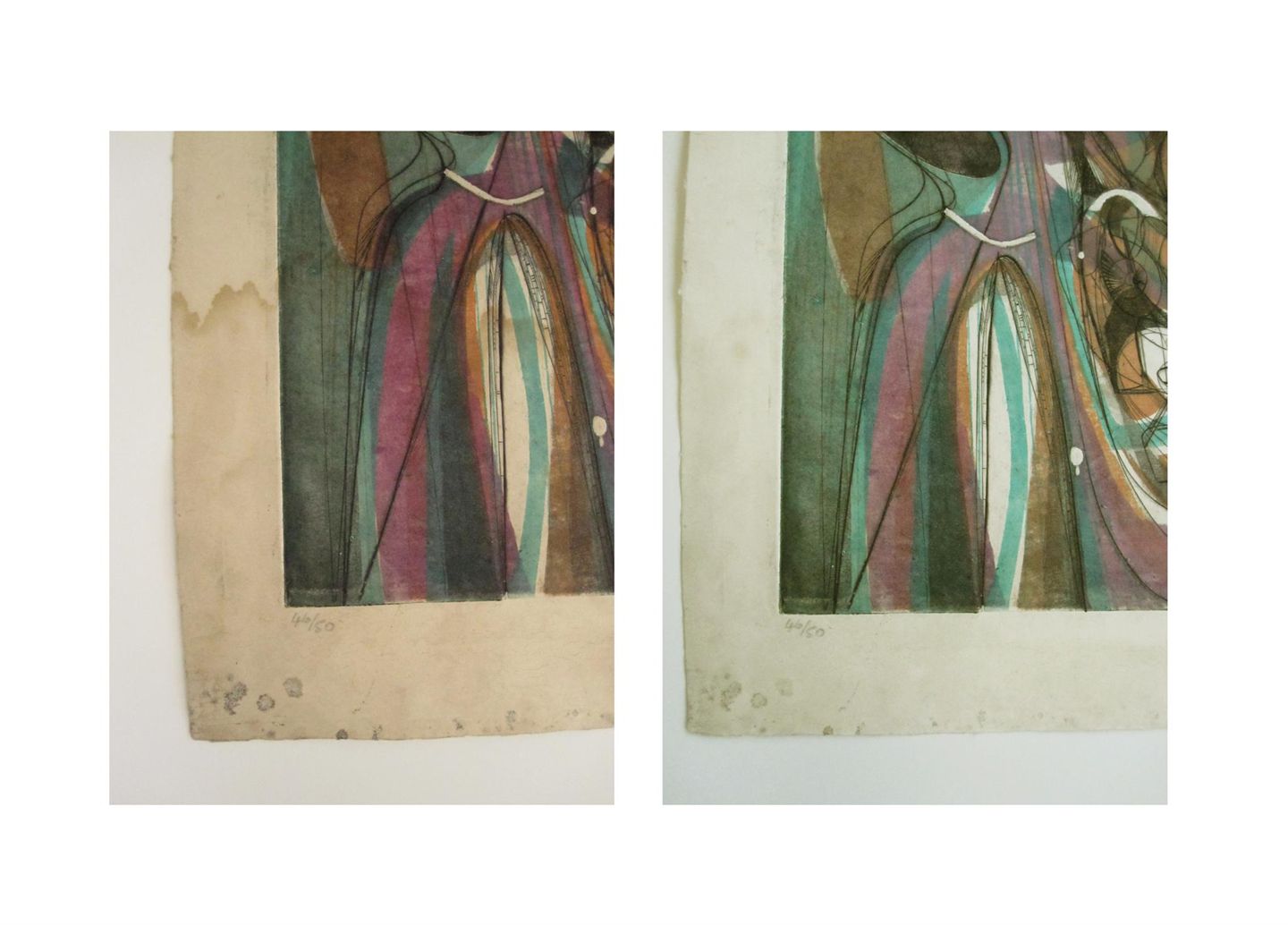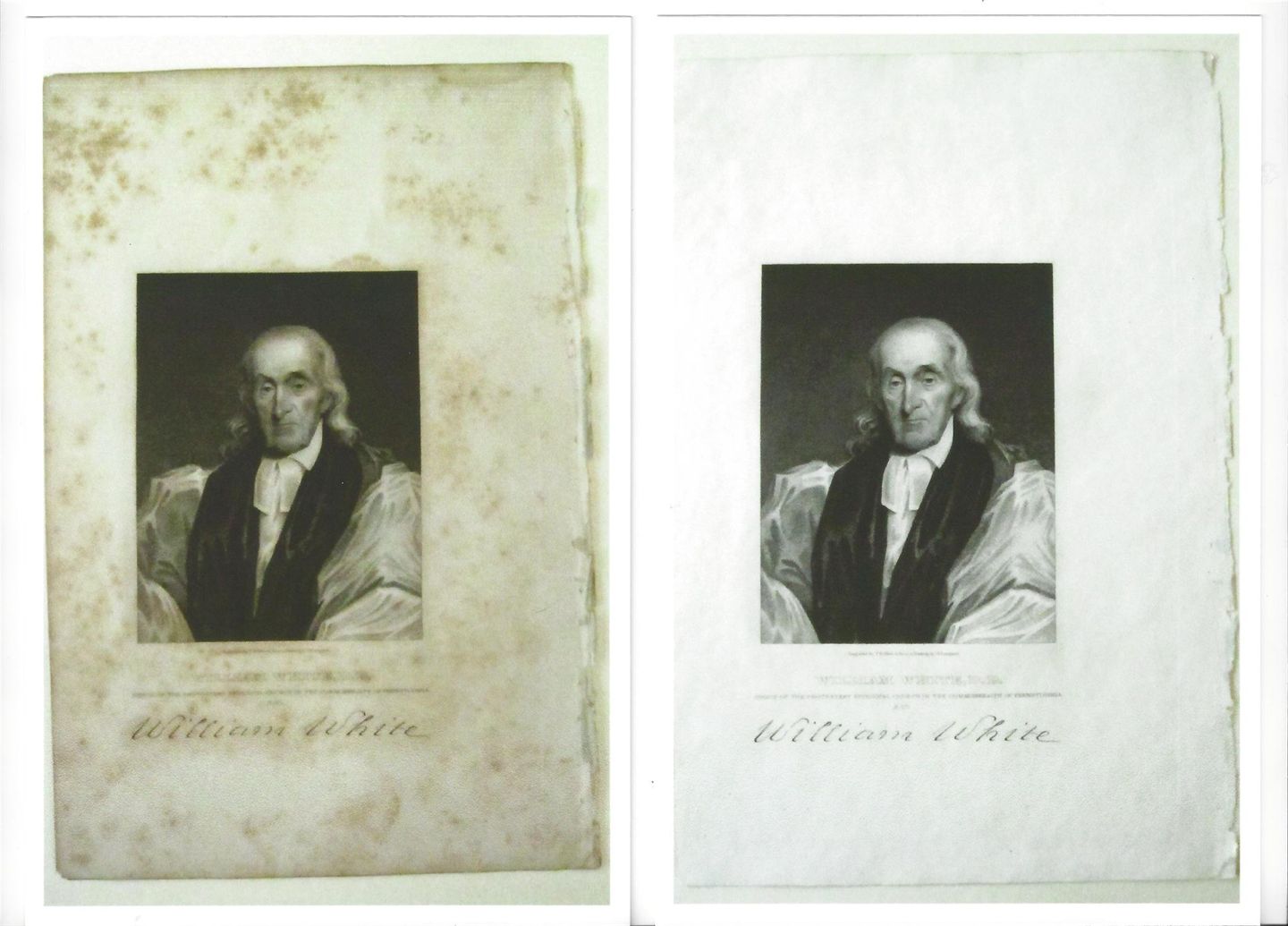Art Conservation
Checking your collection: Works on paper
Problems to look out for:
Everything from subtleties such has high humidity to more obvious events like major moves can take their toll over time so it’s important to take a closer look at your artworks. We’ll take a look at some of the common issues you may notice with works on paper, and if you have any questions about your own art please feel free to reach out to us and we would be happy to help.
Mat Burn

Observe the beveled edge of the mat to see if it’s brown and examine the artwork to see if it seems darker along the exposed edge. Caused by wood pulp used in the core materials of poor quality matboard. The chemicals leach onto the artwork causing the stain which gets worse with time and exposure to sunlight and high humidity.
UV and Light Damage

Brown stain/discoloration from a “window” placed on the back of a frame.
Sometimes clients request a “window” on the back of a frame to show a signature of an interesting feature. I prefer to suggest making a copy instead as exposure can cause sun damage. In the example above, you can see the damage caused by such a window to a very valuable Andy Warhol print. Note how the exposed area has turned brownish.
Water Stains and Adhesion to Glass

Known as tide lines, these stains are usually caused by flooding or when cleaner is sprayed directly on glass and the liquid is absorbed at the bottom of the artwork. This is often a problem when photographs or artwork are framed without a mat or spacers. Once dry, the photograph or artwork can get stuck to the glass, visible as areas that are darker and shinier.
FOXING: (F)errous (Ox)ide

Caused by impurities in paper that oxidize, especially when exposed to dampness.
Tape and Glue Stains
Brown stains shaped like tape or brush strokes.
Usually caused by acidic glue used in masking or brown tape that has deteriorated and penetrated to the facing side of the artwork. Overall browning and a very flat surface are often caused by mounting to acidic backing boards.
Mold/Mildew
Patchy, hazy spots often with “old book smell”
Caused by exposure to water or high humidity.
Solutions
If you observe any of the above conditions it would be best to email a photo for an opinion or make an appointment to have the problems assessed. This may involve removing the artwork from the frame to examine the piece without glass and matting. If you have inherited framed art work, or have pieces in your collection that were framed over 25 years ago it would be advisable to have us clean and remount the pieces using archival matting and UV glass. We will reuse the original frame if appropriate. If conservation or restoration is needed we can make recommendations and can often perform the necessary treatment in-house.
Conservation Tips
Prevent further damage by:
- Removing acidic mat board and glue
- Neutralizing acid and mold
- Hinging or mounting in book mat using archival materials and techniques
- Fitting with UV screening glazing
- Fit securely in sealed frame with new hardware and wire.
Checking your collection: Paintings
Problems to look out for:
Paintings may endure their own challenges over time, but can differ from works on paper in several different ways. We’ll take a look at how things like dust, mounting, and paint itself can be affected so you can know what to look out for.
Dust and Grime
Paintings are not framed with glass so they have to be surface cleaned to remove dust and airborne grime such as nicotine, cooking grease and pollution. Dust also accumulates on the back and can get lodged between the canvas and stretchers. If the painting appears very yellow it may have to be stripped and have new varnish applied.
Loose Mounting and Wiring
Proper painting clips, not nails should be used to mount canvas in frame. If a painting is loose spacers should be added to keep the painting from shifting. The rabbet of the frame should have felt lining to prevent damage to the edges of the painting. Often, the wire and screw eyes have become rusty and loose and should be replaced to keep the frame secure on the wall.
Cracks in Surface
Paint can develop cracks with age. This becomes a problem when moisture gets into the cracks and causes delamination, cleavage and flaking. It is best to address problem before it beocmes severe. A thin sealer coat of varnish can help. If the paint is starting to separate we can refer the painting to a qualified restorer.
